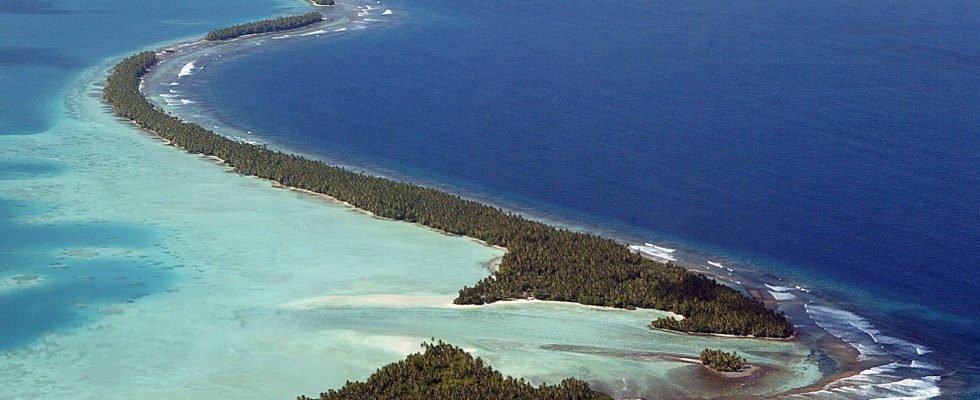It is a treaty described as a “ray of hope” by Tuval Prime Minister Kausea Natano. On Friday, November 10, Australia announced that it had signed an agreement with the Tuvalu archipelago to gradually offer climate asylum to its approximately 11,000 inhabitants.
An understandable joy: this island state in the Pacific Ocean is one of the most threatened by rising water levels linked to global warming. Of the nine coral reefs in Tuvalu, two have already been submerged. And the rest of its territory risks disappearing within less than a century, according to experts. The agreement with Australia thus offers a concrete future to the inhabitants of the Polynesian archipelago, which is multiplying projects to ensure the future of its nation. And in particular by creating a digital double.
Ensuring the future of Tuvalais in the short term
The objectives of the pact signed with the Australian government are clear: to allow citizens of the Tuvalu archipelago to take refuge in Australia to “live, study and work there”. If the text must still be ratified by both parties to come into force, Tuvalais refugees in Australia will have access to the education and health systems, as well as financial and family assistance. This decision, which represents an economic cost for Australia, does not seem entirely disinterested. According to the Belgian political scientist François Gemenne, co-author of the sixth IPCC report, welcoming the Tuvalais would allow it to “increase its position in the zone of influence of the South Pacific where it is in competition with China”, explains- he from the AFP.
A digital governance project for the archipelago
The Tuvalu authorities have, however, set a limit: the number of entries into Australia will be limited to 280 per year initially, in order to avoid a “brain drain”. Indeed, the government’s objective is not to dilute its population and its identity in neighboring Australia, but to perpetuate the nation of Tuvalu in the face of the predicted catastrophe. An approach which is also embodied in another project: the creation of a digital twin of the archipelago.
In 2021, the Tuvalu archipelago announced his Future Now projectbringing together three initiatives to ensure the sustainability of the country in the face of global warming, remember The Guardian. In addition to advocating mutual aid from residents and calling for its maritime borders to be guaranteed in the event of submersion, the government has also launched the project of a digital state.
The project therefore consists of responding to the worst-case scenario: how can we ensure the official representation of a state if it no longer has territory? The Tuvalu government therefore plans to “transfer access to government and consular services and all related administrative systems to the cloud”, details the British daily.
Preserving Tuval culture and history online
Like an embassy ensuring the rights of expatriates from a country, the Tuval digital state must thus guarantee a legal link for its population which would be dispersed to the four corners of the world. “The modalities of this legal continuity, however, remain to be clarified,” comments public law professor Géraldine Giraudeau in online media The Conversation.
Beyond these government websites, Tuvalu’s digital double project also aims to ensure the future of its main wealth: its culture and history. In 2021, the announcement of Future Now was especially remembered for its most visual incarnation: the creation of a digital copy of the Tuval island of Te Afualiku in three dimensions, accessible with a virtual reality headset.
It is the first of the nine atolls in the archipelago to have been recreated using drone images and satellite views. Porous sandy ground, sea currents, palm trees, coral stories, traditional festivals… The idea is first of all to keep as precise a virtual memory as possible of the archipelago, in order to allow “future generations to continue to exist as than culture and nation”, reports The Guardian. With the hope, ultimately, of allowing Tuvalais immigrants to continue to live their culture within this virtual world… If technology does not disappear by then.
